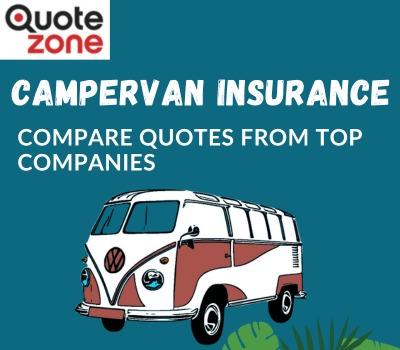Motorhome Insurance Guide UK 2025
Published: October, 2025. Updated: November, 2025.
Motorhome Insurance Tips
Choosing the right motorhome insurance is essential for protecting your vehicle, your belongings and your travels. With so many insurers, policy types and add-ons available in the UK, it can be difficult to know what you actually need.
This guide explains explains the different types of cover available, what’s included and common exclusions.
You’ll also find practical tips on lowering your premium, using security to your advantage and making sure your cover matches the way you travel in your motorhome.
Compare Motorhome Insurance Companies
Motorhome insurance prices can vary significantly between providers. You could save money on motorhome insurance by comparing as many options as possible.
Instead of visiting insurers one by one, use an online comparison tool to explore motorhome insurance options from leading UK providers.
Choose the Right Level of Cover
Consider Comprehensive vs. Third Party, Fire & Theft. For most owners, comprehensive insurance provides the most protection.
Consider Usage and Mileage
Some insurers offer discounts if you only use your motorhome occasionally or travel under a certain mileage limit each year. Be realistic with your estimate — overestimating your usage can increase premiums, while underestimating could invalidate a claim.
Secure Your Motorhome
Adding extra security features such as alarms, wheel clamps, immobilisers, or even a tracking device can reduce your insurance costs. Many insurers reward responsible owners who take proactive steps to protect their vehicle from theft.
Store Your Motorhome Safely
Where you keep your motorhome when it’s not in use has a big impact on insurance costs. Parking on the road usually costs more, while storing your motorhome on a driveway, in a locked garage, or at a recognised storage site often results in cheaper premiums.
Build a No-Claims Bonus
If you can drive safely and avoid claims, you’ll gradually build up a no-claims discount. Over time, this can significantly reduce your insurance premiums, making it one of the best long-term strategies for saving money.
Pay Annually Instead of Monthly
Although monthly instalments make payments easier to manage, insurers usually add interest. If possible, paying annually upfront is often cheaper in the long run.
Consider Advanced Driving Courses
Taking an advanced driving course can show you are a lower-risk driver and potentially lower your premium.
Tailor Your Policy
Think carefully about what extras you need. Options like European cover, breakdown assistance, or personal belongings cover can be useful — but only if you’ll actually use them. Removing unnecessary add-ons can cut costs without reducing your essential cover.
Use a Specialist Provider
Motorhomes are unique vehicles, and standard car insurance providers may not always offer the best policies. Specialist motorhome insurers often understand the lifestyle better and provide tailored cover for touring, camping equipment, and long-term travel.
Check Reviews
Look at customer reviews to gauge the insurer's reputation for claims handling, not just their price.
Disclose All Modifications
Be sure to inform your insurer of any modifications, such as self-conversions or towbars, to ensure your policy is valid.
Motorhome Insurance FAQs
Do I legally need motorhome insurance in the UK?
Yes. If you drive your motorhome on UK roads, you must have at least third party motor insurance by law, just like a car. This covers damage or injury you cause to other people and their property. If your motorhome is kept off the road and has a valid SORN, you don’t have to insure it – but it also can’t be driven.
What’s the difference between motorhome and campervan insurance?
Insurers often use the terms interchangeably, but there can be differences. Motorhomes are usually factory-built leisure vehicles with living accommodation, whereas campervans are often converted vans. Some insurers have separate schemes or prices for each, so it’s worth checking the exact vehicle type and how it’s registered on the V5 when you get quotes.
What does motorhome insurance typically cover?
A comprehensive motorhome policy usually covers damage to your vehicle in an accident, fire or theft, plus third party liability. Many policies also include cover for fitted accessories such as awnings and satellite dishes, windscreens, and sometimes personal belongings inside the motorhome. Limits and exclusions vary a lot, so always read the policy wording carefully.
What isn’t usually covered by motorhome insurance?
Common exclusions include normal wear and tear, mechanical or electrical breakdown, using the motorhome for hire or reward, and leaving it unlocked or with the keys inside. High-value personal items, bicycles and gadgets may only be covered up to a certain limit, or not at all unless you add extra cover. Always check the exclusions section so there are no surprises if you need to claim.
How can I make my motorhome insurance cheaper?
Insurers often give better prices if you:
Fit approved security devices and trackers.
Store the motorhome in a secure location overnight.
Limit your annual mileage.
Build up a no-claims bonus.
Join a recognised owners’ club or scheme.
It can also help to compare quotes from more than one specialist motorhome insurer rather than sticking with the first price you’re given.
Does motorhome insurance cover driving in Europe?
Many UK motorhome policies include at least basic European cover for a set number of days each year, but not always on the same level as your UK cover. Some only provide the minimum legal cover required in the country you’re visiting. If you plan regular trips abroad, look specifically for policies with full European cover and make sure the number of days and countries included matches your travel plans.
About the Author
We’ve spent years travelling across Europe in our motorhome, exploring destinations such as France, Croatia, Italy and Germany while documenting our journeys on our website and YouTube channel.
We share practical guides, real travel experience and clear, reliable advice to help motorhome owners feel confident on the road.
Editorial Disclaimer
This guide to motorhome insurance is provided for general information purposes only and does not constitute financial advice. While we aim to keep all information accurate and up to date, insurance policies and prices can change frequently. Always check the full details with your chosen insurer before making a decision.
Some of the links in this article may be affiliate links, meaning we may receive a small commission if you click through and make a purchase or request a quote — at no extra cost to you. This helps us maintain and improve our website content.

